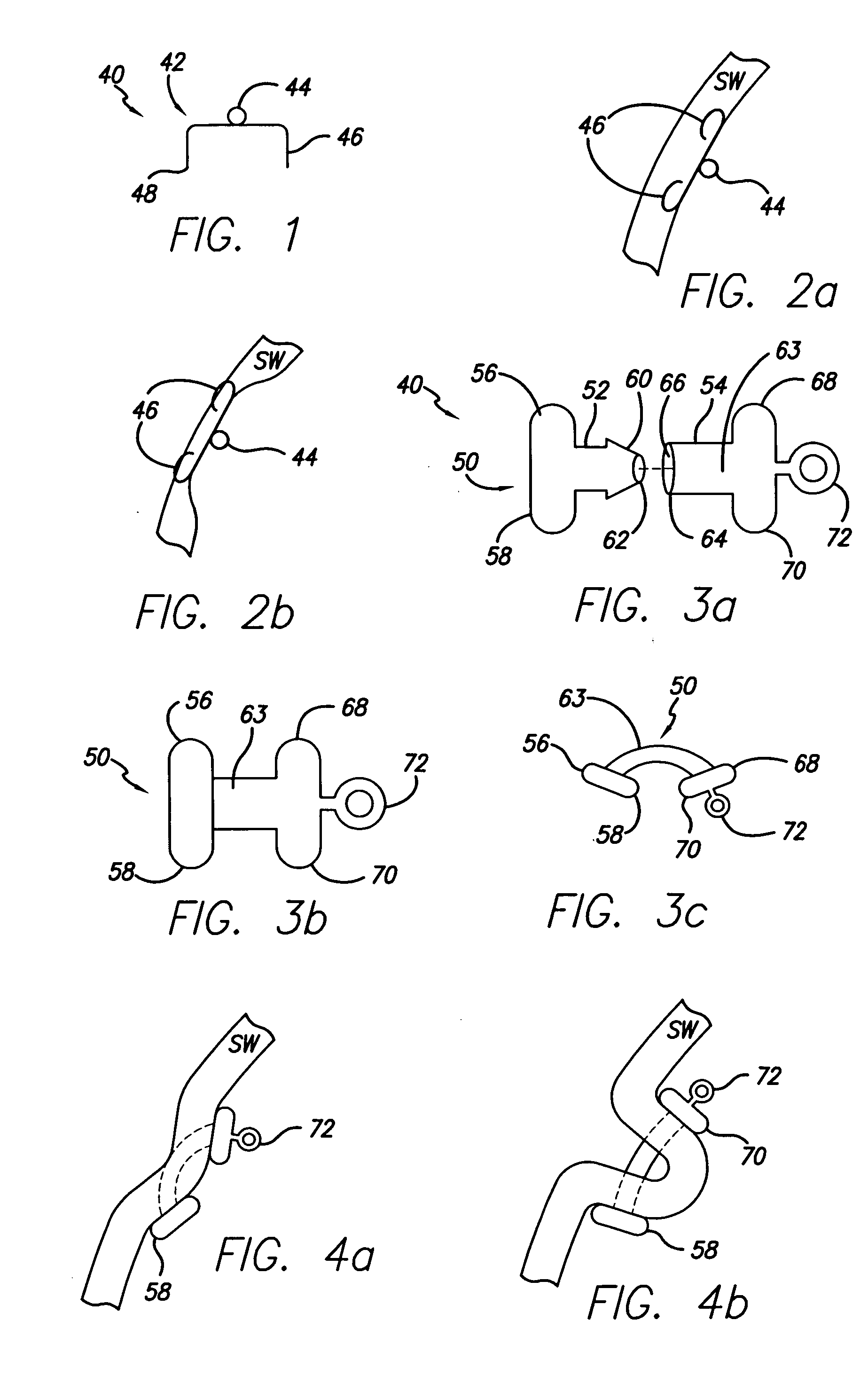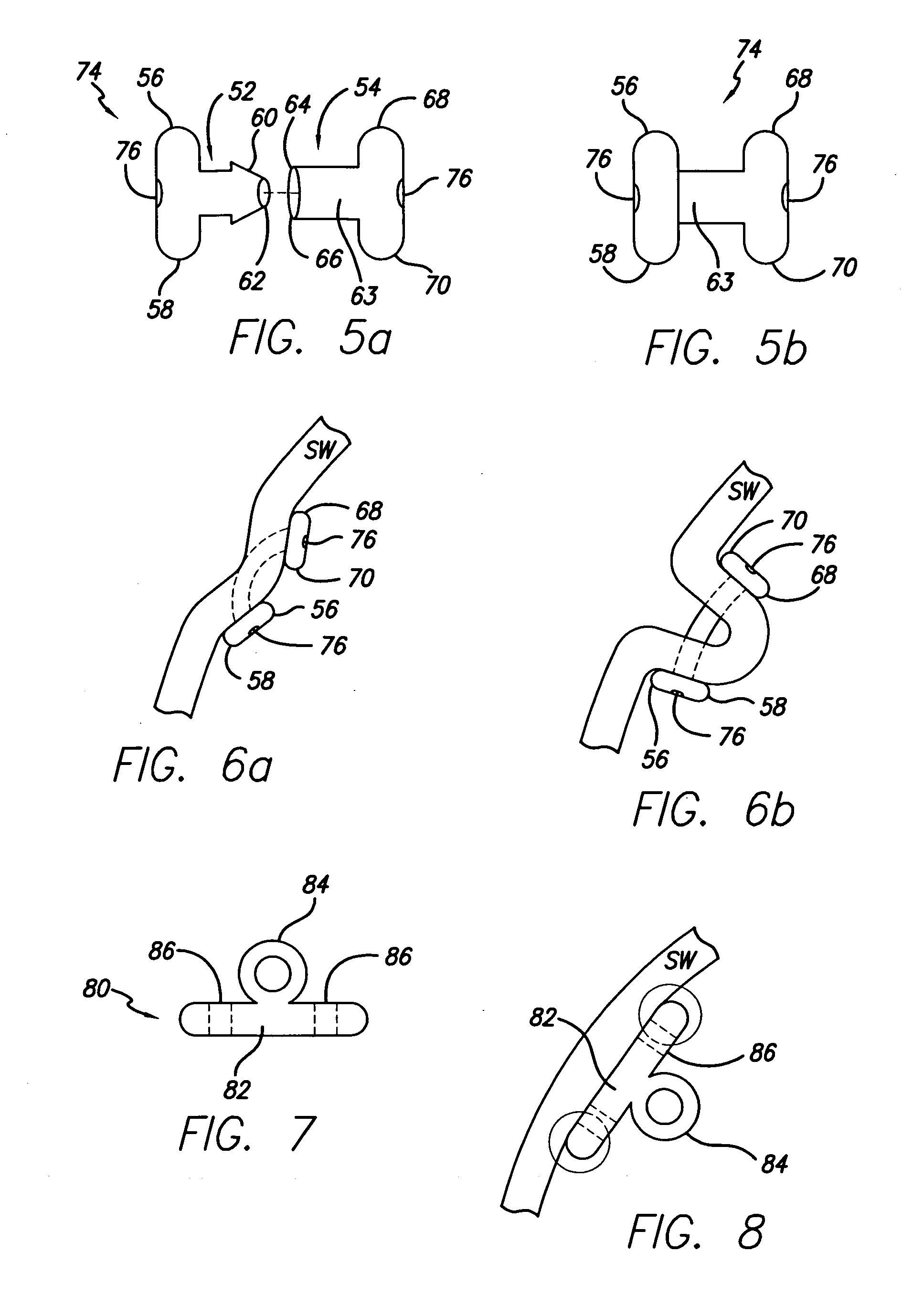Methods for reducing hollow organ volume
a hollow organ and volume reduction technology, applied in the field of mechanical methods for can solve the problems of reducing the effect of the stomach volume, affecting the quality of life of the patient, and affecting the quality of life of the patient, and achieves the effects of reducing the volume of the stomach, reducing the risk of recurrence, and large anchoring surface area
- Summary
- Abstract
- Description
- Claims
- Application Information
AI Technical Summary
Benefits of technology
Problems solved by technology
Method used
Image
Examples
Embodiment Construction
[0096] As will be discussed in detail below, a method of reducing the volume of the stomach involves creating strictures or stomas within the stomach cavity. These strictures can be created through minimally-invasive placement of a mechanical structure for reducing the volume of the stomach via an esophageal approach. For ease of reference, the following embodiments will be described as being advanced transorally to the stomach, although the embodiments of the restricting devices can be used within other hollow body organs as well.
[0097] One embodiment for reducing the volume of the stomach cavity includes placing anchors along the stomach lining in a desired pattern, and then cinching the anchors together with a tensioning member, such as a suture or wire. FIGS. 1-2b show an embodiment of an anchor 40 that may be used in the trans-esophageal or trans-oral procedure. The anchor in this embodiment is a staple 42 having an eyelet 44 and arms 46, each with a sharp tip 48. FIG. 1 shows...
PUM
 Login to View More
Login to View More Abstract
Description
Claims
Application Information
 Login to View More
Login to View More - R&D
- Intellectual Property
- Life Sciences
- Materials
- Tech Scout
- Unparalleled Data Quality
- Higher Quality Content
- 60% Fewer Hallucinations
Browse by: Latest US Patents, China's latest patents, Technical Efficacy Thesaurus, Application Domain, Technology Topic, Popular Technical Reports.
© 2025 PatSnap. All rights reserved.Legal|Privacy policy|Modern Slavery Act Transparency Statement|Sitemap|About US| Contact US: help@patsnap.com



